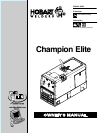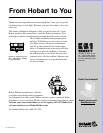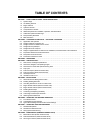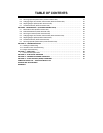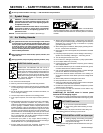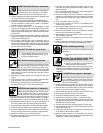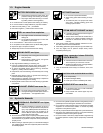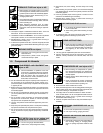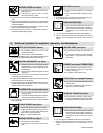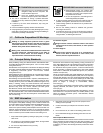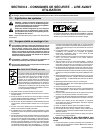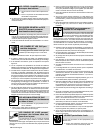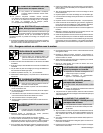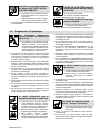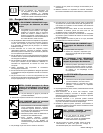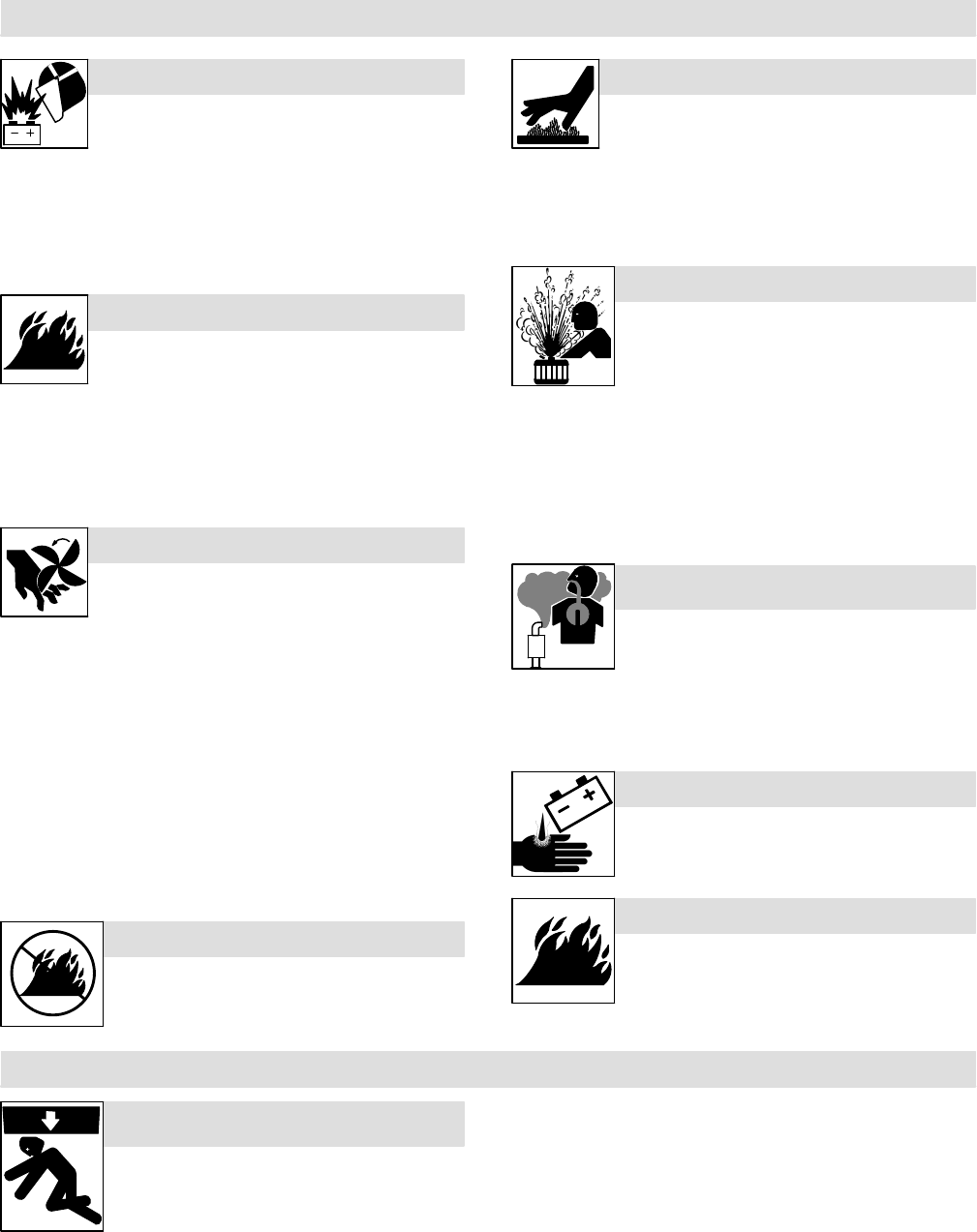
OM-240 438 Page 3
1-3. Engine Hazards
BATTERY EXPLOSION can injure.
D Always wear a face shield, rubber gloves, and
protective clothing when working on a battery.
D Stop engine before disconnecting or connect-
ing battery cables or servicing battery.
D Do not allow tools to cause sparks when working on a battery.
D Do not use welder to charge batteries or jump start vehicles.
D Observe correct polarity (+ and −) on batteries.
D Disconnect negative (−) cable first and connect it last.
FUEL can cause fire or explosion.
D Stop engine and let it cool off before checking or
adding fuel.
D Do not add fuel while smoking or if unit is near
any sparks or open flames.
D Do not overfill tank — allow room for fuel to expand.
D Do not spill fuel. If fuel is spilled, clean up before starting engine.
D Dispose of rags in a fireproof container.
D Always keep nozzle in contact with tank when fueling.
MOVING PARTS can injure.
D Keep away from moving parts such as fans,
belts, and rotors.
D Keep all doors, panels, covers, and guards
closed and securely in place.
D Stop engine before installing or connecting unit.
D Have only qualified persons remove doors, panels, covers, or
guards for maintenance and troubleshooting as necessary.
D To prevent accidental starting during servicing, disconnect
negative (−) battery cable from battery.
D Keep hands, hair, loose clothing, and tools away from moving
parts.
D Reinstall doors, panels, covers, or guards when servicing is
finished and before starting engine.
D Before working on generator, remove spark plugs or injectors to
keep engine from kicking back or starting.
D Block flywheel so that it will not turn while working on generator
components.
EXHAUST SPARKS can cause fire.
D Do not let engine exhaust sparks cause fire.
D Use approved engine exhaust spark arrestor in
required areas — see applicable codes.
HOT PARTS can burn.
D Do not touch hot parts bare handed.
D Allow cooling period before working on equip-
ment.
D To handle hot parts, use proper tools and/or
wear heavy, insulated welding gloves and
clothing to prevent burns.
STEAM AND HOT COOLANT can burn.
D If possible, check coolant level when engine is
cold to avoid scalding.
D Always check coolant level at overflow tank, if
present on unit, instead of radiator (unless told
otherwise in maintenance section or engine
manual).
D If the engine is warm, checking is needed, and there is no over-
flow tank, follow the next two statements.
D Wear safety glasses and gloves and put a rag over radiator cap.
D Turn cap slightly and let pressure escape slowly before
completely removing cap.
Using a generator indoors CAN KILL
YOU IN MINUTES.
D Generator exhaust contains carbon monoxide.
This is a poison you cannot see or smell.
D NEVER use inside a home or garage, EVEN IF
doors and windows are open.
D Only use OUTSIDE and far away from windows, doors, and
vents.
BATTERY ACID can BURN SKIN and EYES.
D Do not tip battery.
D Replace damaged battery.
D Flush eyes and skin immediately with water.
ENGINE HEAT can cause fire.
D Do not locate unit on, over, or near combustible
surfaces or flammables.
D Keep exhaust and exhaust pipes way from
flammables.
1-4. Hydraulic Hazards
HYDRAULIC EQUIPMENT can injure
or kill.
D Incorrect installation or operation of this unit
could result in equipment failure and personal
injury. Only qualified persons should install, op-
erate, and service this unit according to its
Owner’s Manual, industry standards, and na-
tional, state, and local codes.
D Do not exceed the rated output or capacity of the hydraulic pump
or any equipment in the hydraulic system. Design hydraulic sys-
tem so failure of any hydraulic component will not put people or
property at risk.
D Before working on hydraulic system, turn off and lockout/tagout
unit, release pressure, and be sure hydraulic pressure cannot be
accidentally applied.
D Do not work on hydraulic system with unit running unless you are a
qualified person and following the manufacturer’s instructions.
D Do not modify or alter hydraulic pump or manufacturer-supplied
equipment. Do not disconnect, disable, or override any safety
equipment in the hydraulic system.
D Use only components/accessories approved by the manufacturer.
D Keep away from potential pinch points or crush points created by
equipment connected to the hydraulic system.
D Do not work under or around any equipment that is supported only
by hydraulic pressure. Properly support equipment by mechanical
means.



